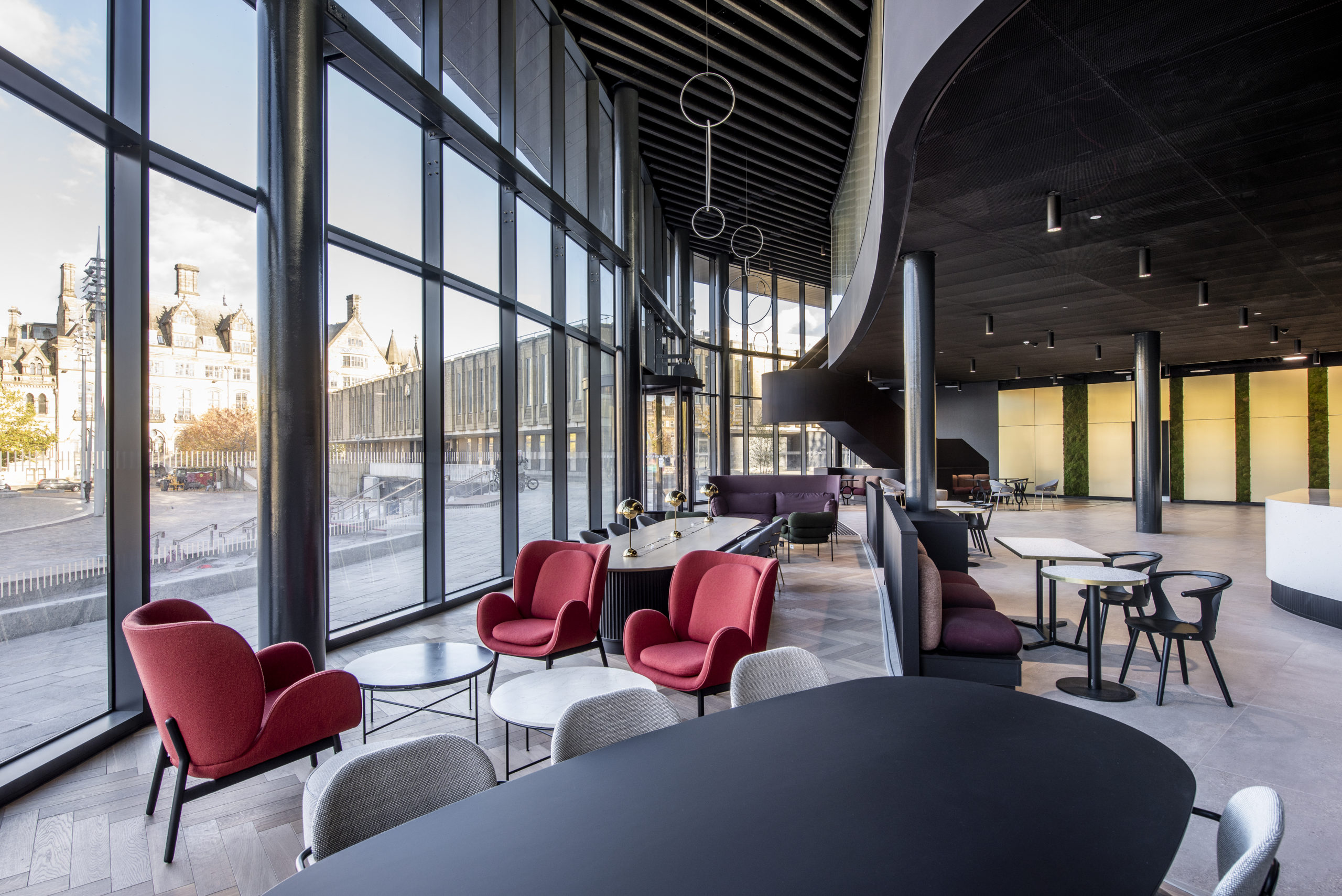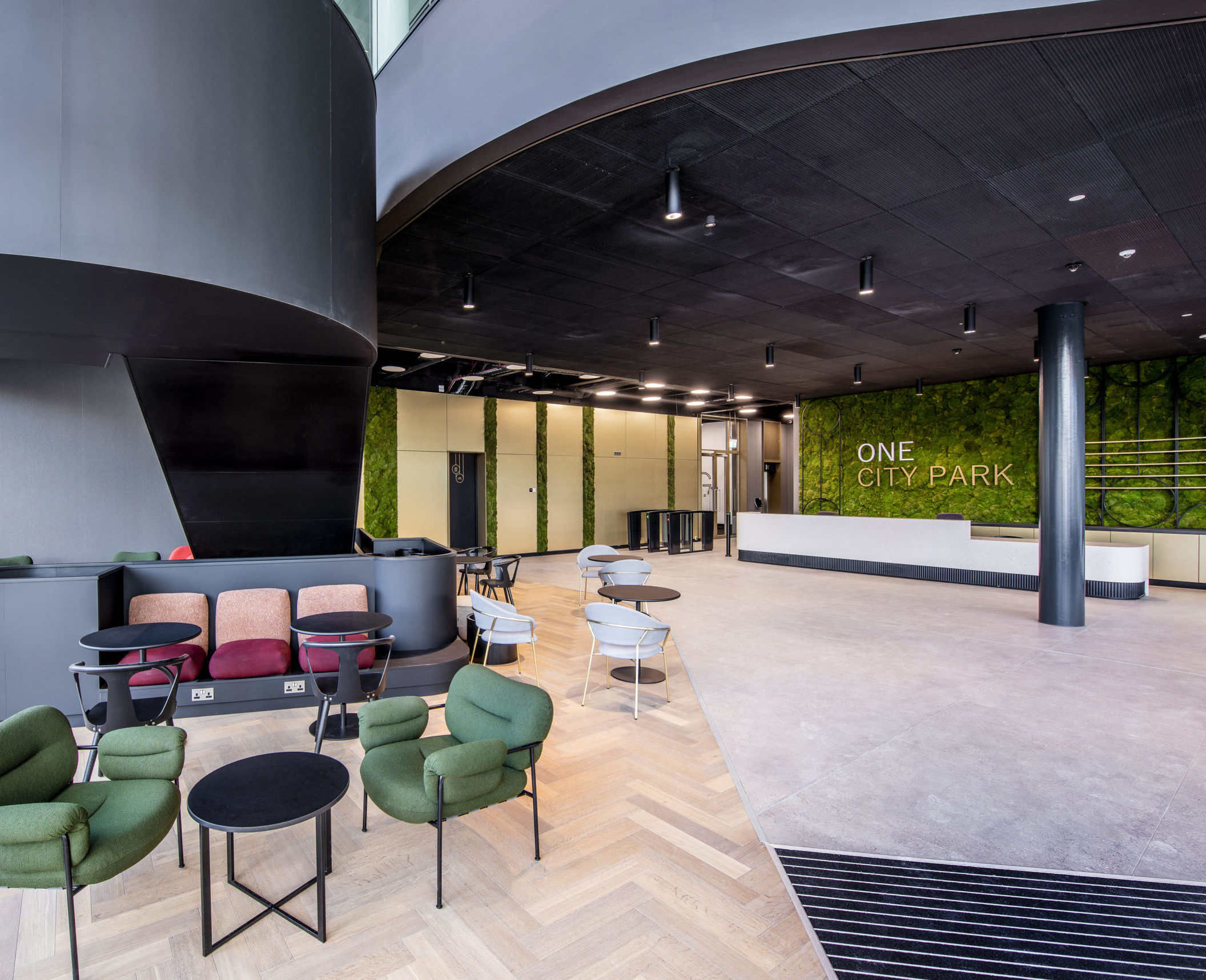Why high-quality workspaces are a key part of successful placemaking
08.10.24 5 min read

At the heart of our work at Muse is the idea that regeneration requires a joined-up approach that brings together improved transport infrastructure, leisure facilities and new homes to create more successful places.

Simon Dew
However, creating high quality workspaces that attract employers from start ups and large businesses alike is also a key part of the puzzle of successful placemaking, and when done right, can be a real catalyst for future growth.
In our towns and cities, high quality office spaces are more than places to do business. They have a pivotal role to play in revitalising communities.
However, it is not a simple case of ‘build it and they will come’. These new workplaces can only thrive if people have access to the transport infrastructure that will get them to work, the homes that can allow them to live closer to the office, and attractive leisure options that allow them to socialise with their colleagues, friends and family when the working day is done.
It’s vital that our places of work are embedded into the fabric of a place and that means workplaces that are active parts of their towns and cities, rather than being forgotten in an out-of-town office park.
When done correctly, high quality workspaces can drive wider regeneration. It’s why projects such as Salford Central, a £1bn programme of regeneration, have been so successful. Delivering over 770,000 sq ft of workspace, alongside new shops and restaurants, public and event space and over 1,000 mixed tenure homes, has been a key part of the transformation of this part of Salford into a thriving neighbourhood, creating a place where people can seamlessly work, live and spend their free time.
It’s an approach we are now looking to in Bradford, where several projects are underway that could reimagine the city for a new generation. Our new One City Park development, which has been delivered in partnership with Bradford City Council and completed at the end of 2023, is providing much needed, grade A office space and helping employers to attract the city’s young and dynamic workforce.
However, the success of this scheme has hinged on a wider raft of interconnected regeneration projects coming together in Bradford, including upcoming improvements to rail infrastructure, new city centre homes as part of City Village and key leisure projects such as Darley Street Markets and Bradford Live. It is only when all these elements – work, home and leisure – come together that we can create the right environment for a new generation to thrive in a city.
Creating the right workspaces that offer the opportunity to become key catalysts of further development isn’t simple, and it requires office buildings to have the right qualities that will make them successful and sustainable places that are fit for future generations. This includes:
Sustainability
Sustainable buildings are increasingly important to occupiers who have their own ESG targets but also to the people who will be working there, who want their workplaces to be greener and prioritise their wellbeing. Therefore, it’s vital that new workspaces meet the right standards, such as a BREEAM rating of Excellent or above, which signifies a building’s environmental, social, and economic sustainability performance.
However, it’s also about ensuring these places allow workers to live greener lifestyles. Town or city centre locations with good transport links are key to this but also having features that allow for active travel, such as bike racks, or providing EV chargers in car parks, is also important.
Sustainability has been at the heart of One City Park from the very start, with the building being EPC A rated and achieving BREEAM Excellent, a WiredScore Gold and SmartScore Gold Rating.
Flexibility
Part of successful workplaces is allowing the space for flex operators, which we are seeing becoming an increasingly popular tenant in office buildings. These flexible spaces allow for SMEs and entrepreneurs to set up shop without being tied into long leases, allowing for new businesses to grow and local economies to flourish. Flexibility in workspace design and lease terms makes it easier for these companies to adapt and scale, fostering a dynamic business environment and driving wider economic growth.
In Bradford, we are delighted to have welcomed PwC as an anchor tenant at One City Park, with the space allowing the professional services firm to grow its existing workforce to around 500 employees over the next few years. However, we are also looking at future opportunities for flex operators to take advantage of other space within the building, so we can cater for a diverse range of employers.
Design excellence
People-centric design is crucial for creating workspaces that attract and retain talent. This means designing spaces that prioritise natural light, green areas, ergonomic workstations, and collaborative spaces.
One City Park in Bradford is testament to this, with its award-winning design focusing on occupant comfort and wellbeing. From the start, we have put people at the heart of the design to inspire the people working in the building and encourage collaboration. This includes a co-working and café space on the ground floor that opens out onto the Mirror Pool in City Park, and floor to ceiling glazing across the upper floors that provides natural light and views out onto the wider city.
We’re proud that this approach to design has been recognised, with One City Park recently winning the Design Excellence award at the recent Yorkshire Business Insider Placemaking awards.
By creating high quality workspaces, we can ensure that offices are not just functional. When done correctly, workspaces can become an integral part of a place, helping to create vibrant communities where people can thrive both professionally and personally.



